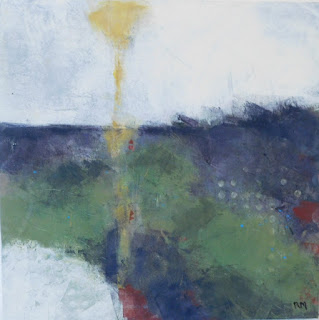At the Crossroads of Built and Breaking
 |
| "The Habit of Being" |
 |
| "Everything That Rises Must Converge" |
 |
| "The Violent Bear It Away" |
 |
| "The Enduring Chill" |
By Tom Wachunas
“No structure, even an artificial one,
enjoys the process of entropy. It is the ultimate fate of everything, and
everything resists it.”
― Philip K. Dick, from Galactic
Pot-Healer
“Just as the constant increase of entropy is
the basic law of the universe, so it is the basic law of life to be ever more
highly structured and to struggle against entropy.” - Václav Havel
EXHIBIT: DRAFTING Dimensions – Contemporary Midwest
Ceramics / On view through July 21, 2019 at The Canton Museum of Art (CMA),
1001 Market Avenue North, Canton, Ohio / 330.453.7666 / Viewing hours: Monday –
Closed; Tuesday - Thursday - 10am-8pm; Friday - Saturday - 10am-5pm; Sunday -
1pm-5pm /
In his eloquent
website statement (click on the link above), Peter Christian Johnson has
written that his sculptures are “…a meditation on entropy that uses
architecture as a foil to examine the dichotomy of beauty and loss. I am
interested in transformation, which is expressed in both destruction and growth…”
In its broadest
meaning and applications, ‘entropy’ is a measure of randomness or disorder.
It’s generally recognized as a “law” or a given condition of any closed system,
including the universe. In layman’s terms, things put together fall apart.
You can get a good
idea of Johnson’s working procedures by looking at the two large wallboard panels covered with with
his initial rough sketches, with some of them further refined through computer designs,
and photos of various structures and sites that inspire his clay forms. His finalized
ceramic objects can suggest any number of architectural forms - from elaborate
urban towers, trellises, or bridges, to cathedral apses and naves. Made with
delicate sticks of white porcelain, they appear to be bent by a confluence of
heat and gravity. Are these intricately regulated configurations in the process
of being covered by those irregular globs of colored glaze that look like a
skin forming? Or are these meticulously constructed, pristine frameworks breaking
free from such constraints?
A particularly
interesting aspect here is the way in which the objects are presented. They’re not sitting on solid vertical
pedestals. Each of the free-standing titled works is actually a tripartite entity
occupying different planes in space via open-sided poplar stands supporting
separate surfaces. It’s an elegant decision, imparting the sense that the
object on the topmost “shelf” is the final step in a process – the result of
evolving, associated thoughts or stages implied by the forms located below.
If you think of the
inherent tensions between our consciously organized physical and ideological
systems and their gradual trending toward morphing or collapse, then it’s possible to
consider Johnson’s forms as metaphors for, or inquiries about, the very nature
of our existence. The parameters of being alive place us always somewhere between
our purposeful, intentional designs and the potential anarchy of uncertainty
and decline.
Between control and chaos, between building
and brokenness, Johnson’s art is an intriguing crossroads where determinate
solids meet unpredictable liquids. It’s a place where fragile permanence and
inevitable mutability converge. Much like life.




















